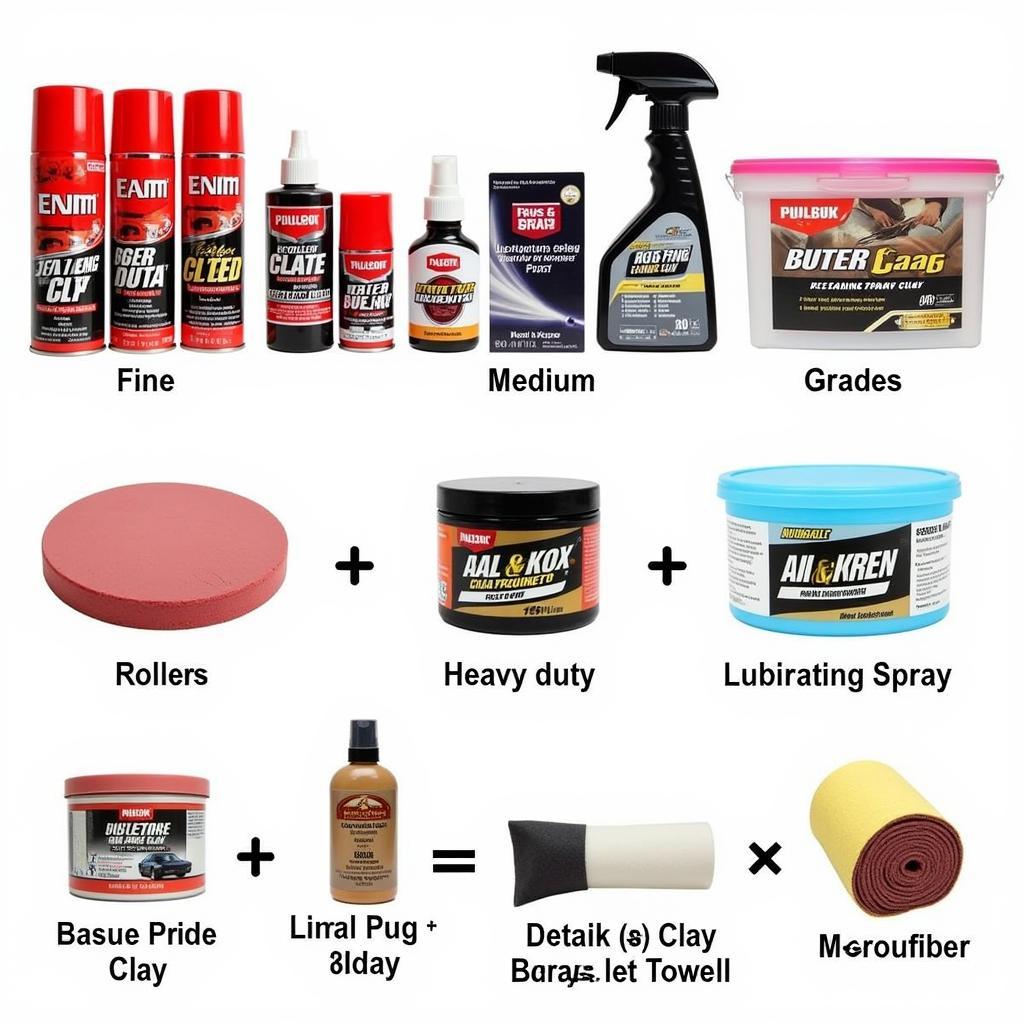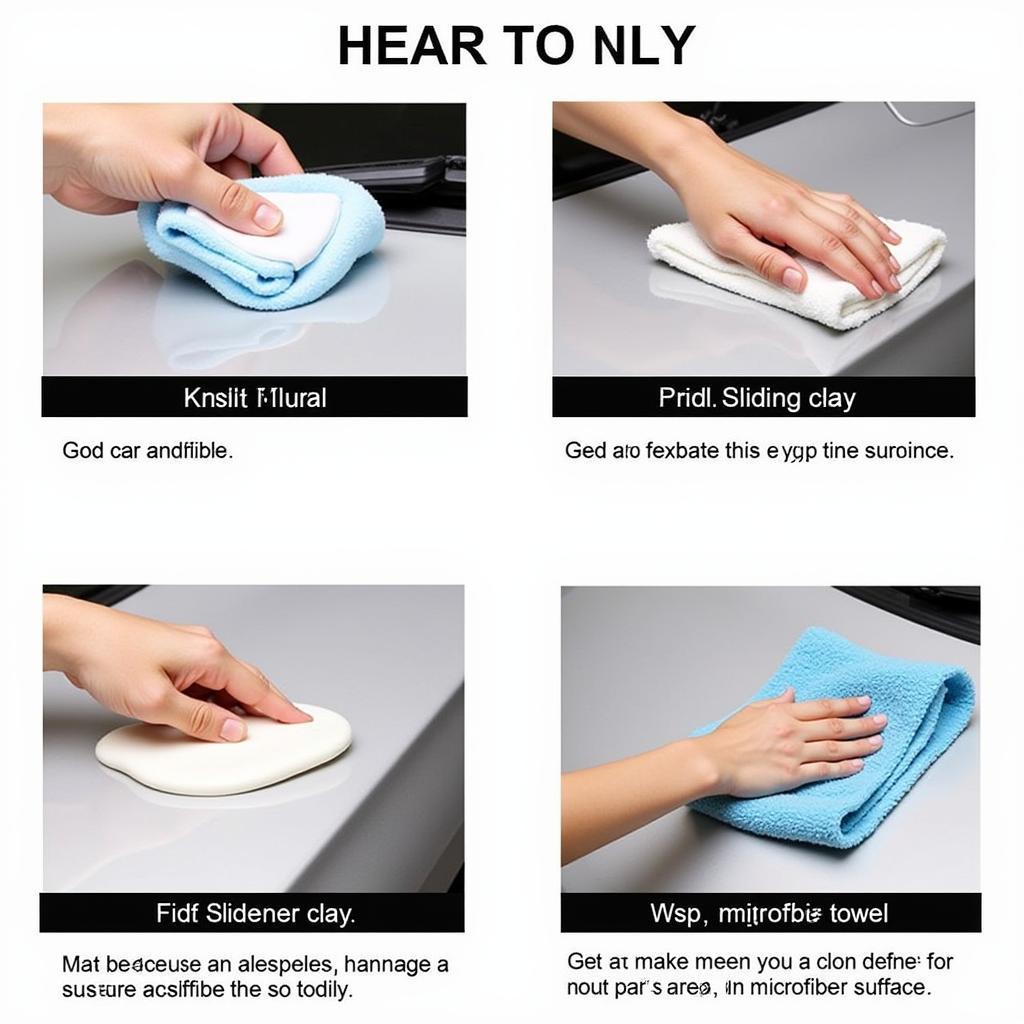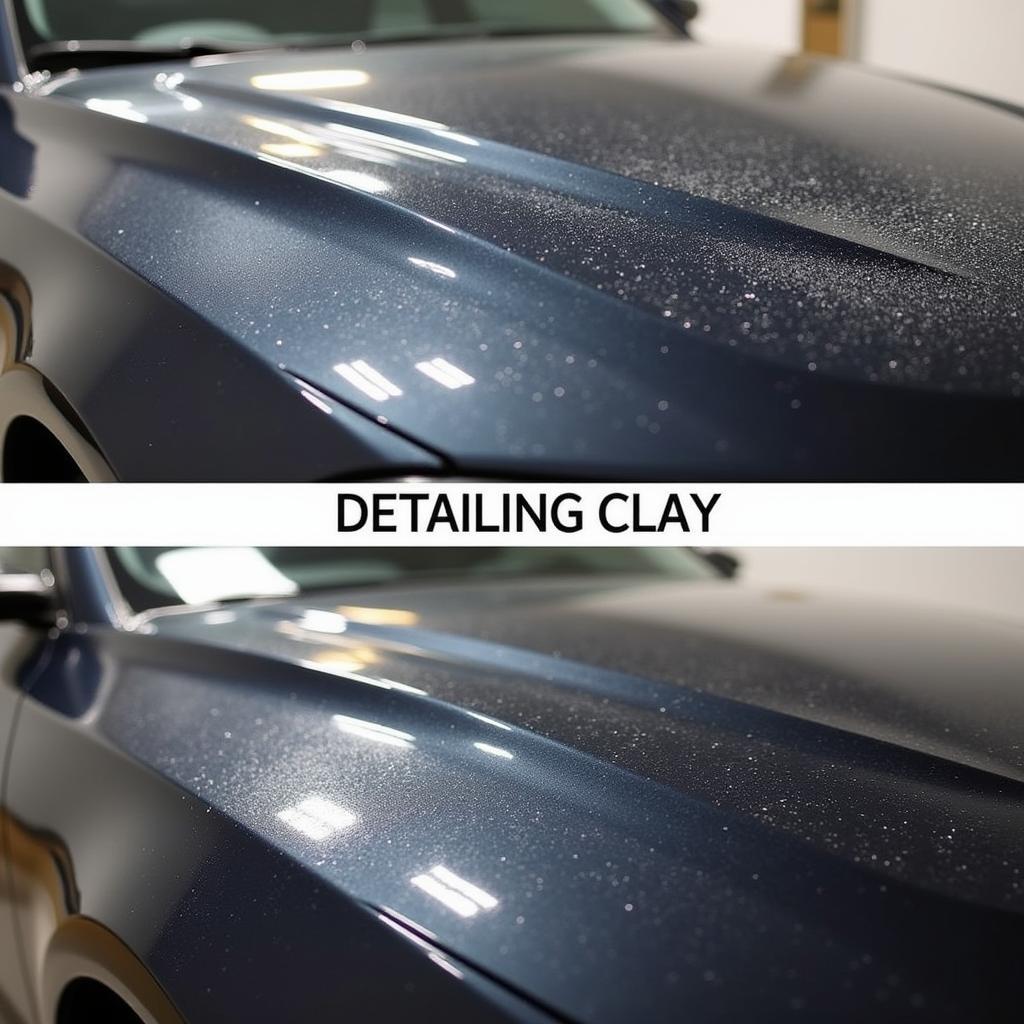Many car enthusiasts searching for the perfect finish wonder about making their own car detailing clay. While the idea of crafting a DIY detailing clay might seem appealing, it’s crucial to understand the science behind effective car detailing and why store-bought clay is generally the preferred option. This article delves into the complexities of car detailing clay, exploring the reasons why making your own is often impractical and highlighting the benefits of using commercially available products.
After washing and drying your car, you might notice that the paint still feels rough to the touch. This roughness is caused by embedded contaminants like industrial fallout, tree sap, and brake dust that washing alone can’t remove. These contaminants not only make your car look dull but can also damage the paintwork over time. This is where detailing clay comes into play. It acts like a magnet, gently lifting these bonded contaminants to restore a smooth, glass-like finish.
Why Making DIY Car Detailing Clay is Not Recommended
While some online forums might suggest homemade clay recipes, creating an effective and safe detailing clay is a complex process. The consistency, tackiness, and lubricating properties need to be precisely balanced to avoid scratching or marring the paint. Incorrectly formulated DIY clay can be too abrasive, leading to swirl marks and micro-scratches that diminish the car’s appearance. Furthermore, achieving the correct pH balance is crucial to prevent chemical reactions with the car’s paint.
The Science Behind Effective Car Detailing Clay
Commercially available detailing clays are engineered with a specific polymer structure designed to effectively lift contaminants without harming the paint. They are also formulated with lubricants to minimize friction and prevent scratching. These clays come in different grades, from fine to medium to heavy-duty, allowing you to choose the right clay for your car’s specific needs. A fine-grade clay is ideal for regular maintenance, while a heavy-duty clay is best for tackling heavily contaminated vehicles. You can find a great selection of detailing clay and other car care supplies at a good detailing shop. Check out our article on where is a good place to get your car detailed.
Benefits of Using Store-Bought Detailing Clay
Using professional-grade detailing clay provides a number of advantages. These include:
- Safety: Formulated for safe and effective contaminant removal.
- Ease of use: Ready to use right out of the package.
- Consistency: Provides reliable and predictable results.
- Variety: Available in different grades for various levels of contamination.
- Cost-effectiveness: Saves time and resources compared to attempting DIY solutions.
 Store-bought detailing clay options
Store-bought detailing clay options
How to Use Detailing Clay Properly
Using detailing clay correctly is essential for achieving optimal results and avoiding damage. Follow these steps:
- Wash and dry your car thoroughly.
- Knead the clay into a flat, pancake-like shape.
- Spray a generous amount of detailing clay lubricant onto a small section of the car’s surface.
- Gently glide the clay across the lubricated area using back-and-forth motions. Do not press down hard. The clay’s tackiness will lift the contaminants.
- Fold and knead the clay regularly to expose a clean surface.
- Wipe the area with a clean microfiber towel.
- Repeat steps 3-6 for the entire car.
 Proper detailing clay technique
Proper detailing clay technique
“Using the right clay and technique makes all the difference,” says renowned detailing expert, James Miller, “A quality clay coupled with proper lubrication is key to achieving a flawless finish without causing any damage.”
Understanding the Importance of Lubrication
Using a dedicated clay lubricant is crucial. It creates a slippery surface that allows the clay to glide smoothly and prevents it from sticking to the paint. Never use water alone as a lubricant. Water does not provide sufficient lubrication and can increase the risk of marring the paint. For more information on car detailing and the necessary supplies, check our article on what to buy to detail your car. Also, if you want to understand more about clay detailing specifically, read our article on what is clay car detailing.
How to Make Clay for Car Detailing: FAQs
Can you make your own car detailing clay? Technically, yes, but it’s not recommended due to the complexity and risk of damaging your car’s paint.
What are the ingredients in detailing clay? Commercial clays are typically made from a polymer base with various additives for lubrication and tackiness.
How often should I clay my car? Generally, claying your car every 6-12 months is sufficient, depending on the environment and driving conditions.
“Detailing is an art,” adds Maria Sanchez, a leading figure in automotive aesthetics, “and using the correct tools, like a quality detailing clay, is crucial for mastering that art.”
In conclusion, while the idea of How To Make Clay For Car Detailing might seem intriguing, using professionally formulated detailing clay is the best approach for achieving a flawless, contaminant-free finish without risking damage to your car’s paint. Understanding the science behind effective car detailing and the benefits of using quality products will help you achieve professional results. If you are interested in the costs associated with professional BMW detailing, you can find more information on our page about what does bmw car detailing cost.
 Car paint after claying
Car paint after claying
FAQs
- What is the best type of detailing clay to use?
- How do I know if my car needs claying?
- Can I use detailing clay on all paint finishes?
- How do I store detailing clay?
- What are some common mistakes to avoid when using detailing clay?
- What are the alternatives to detailing clay?
- How long does a detailing clay bar last?
See also these related articles: what do i need to detail car like a pro
Need help with car detailing? Contact us via WhatsApp: +1(641)206-8880 or Email: [email protected]. Our 24/7 customer support team is always ready to assist you.

Leave a Reply